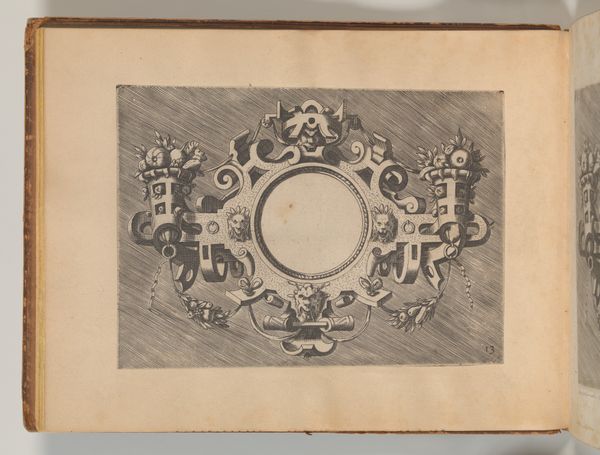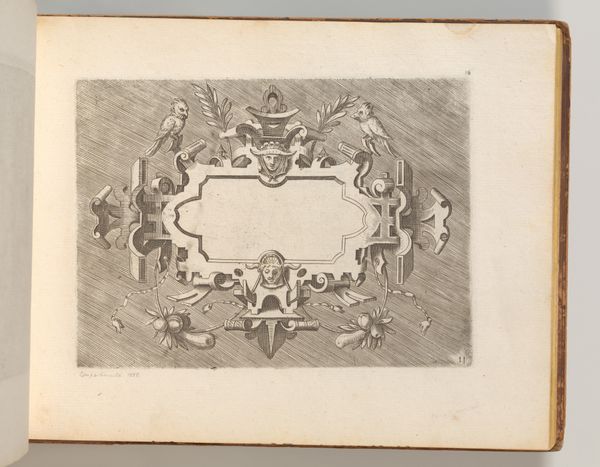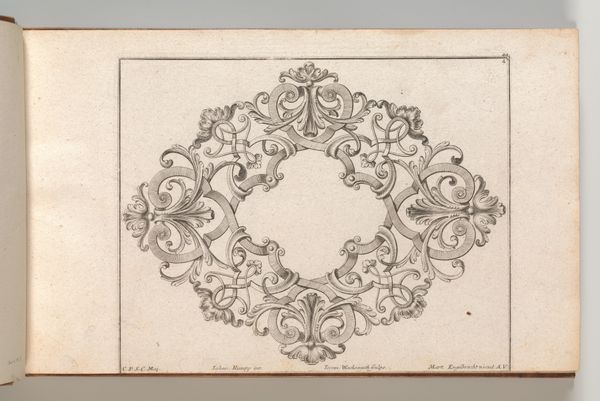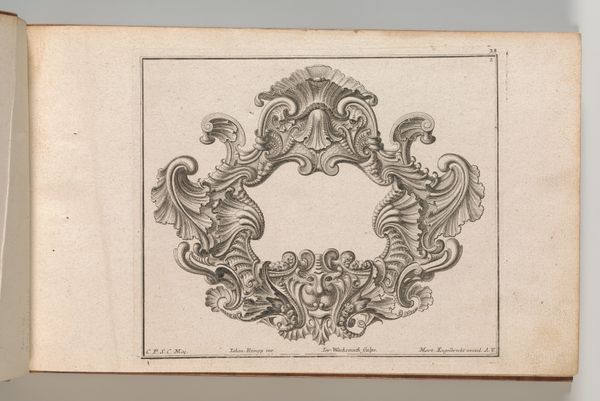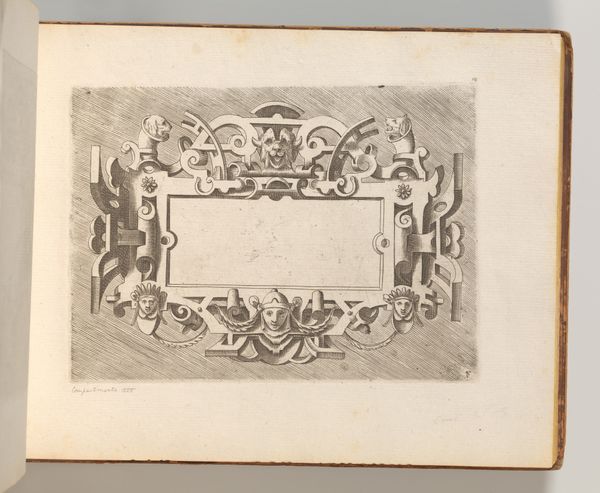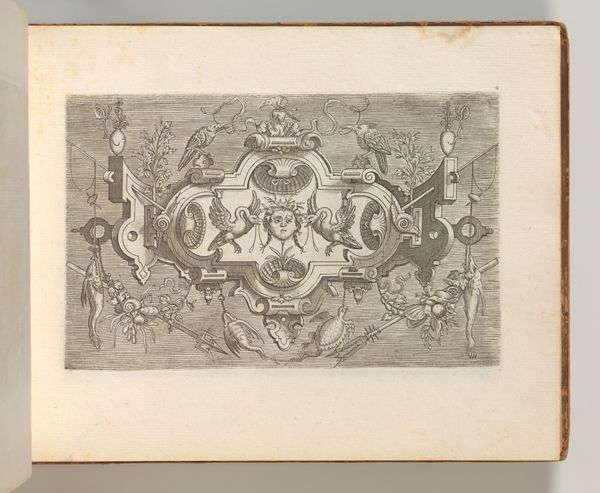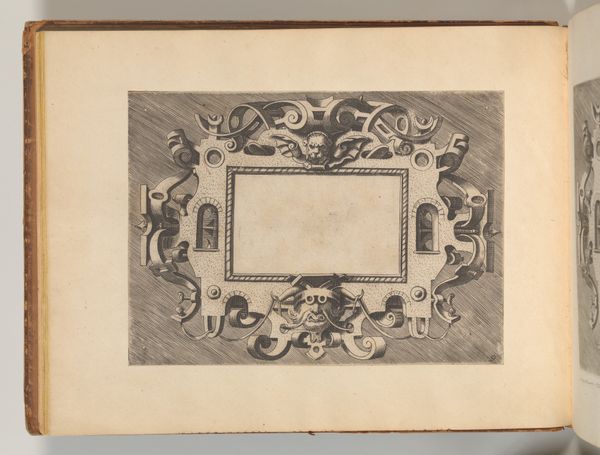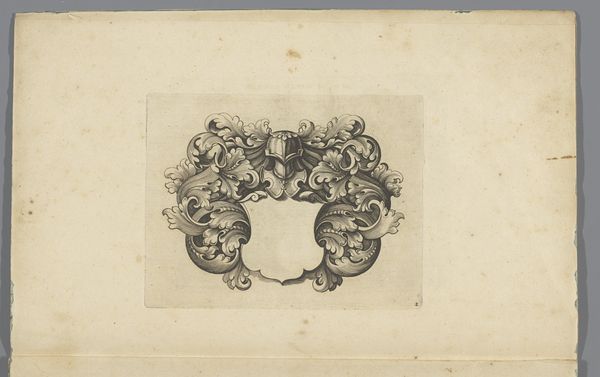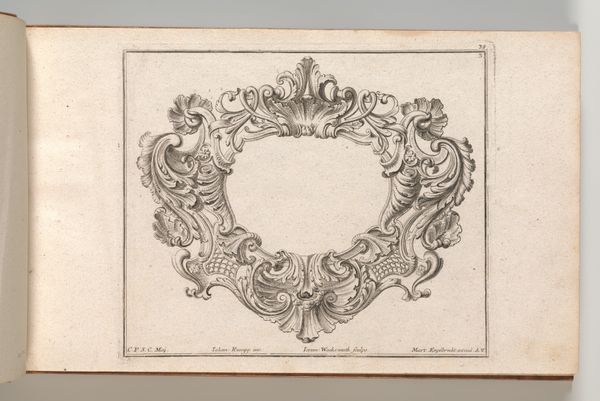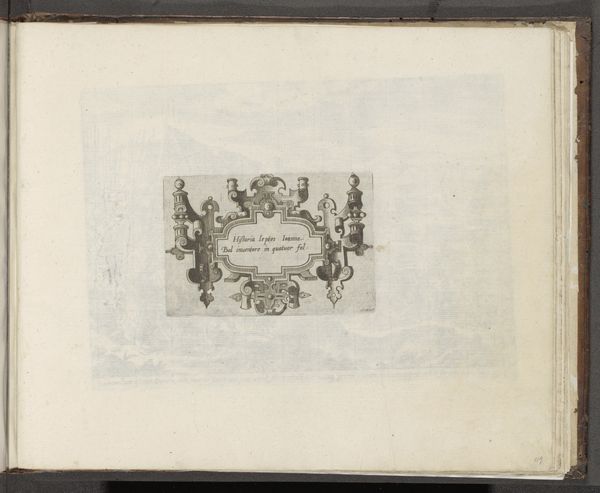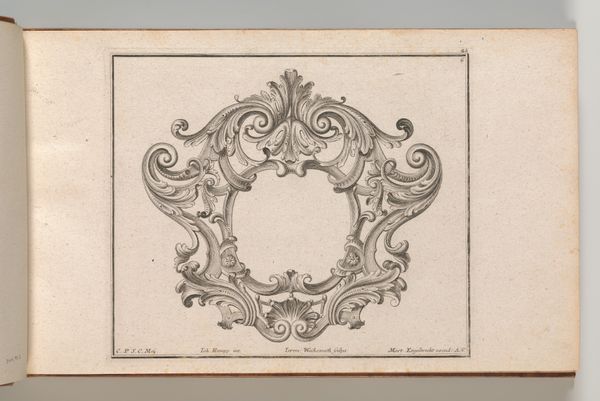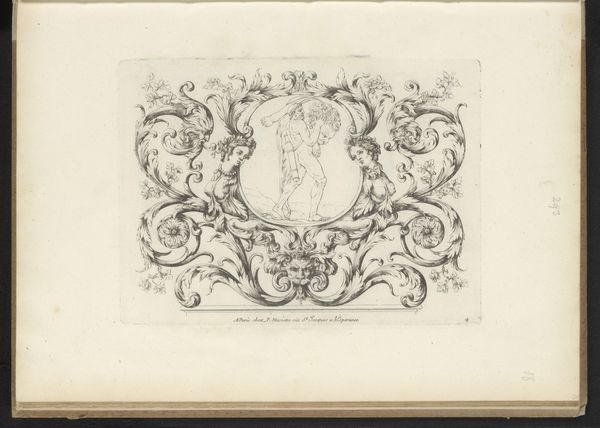
Targhe ed altri ornati di varie e capricciose invenzioni (Cartouches and other ornaments of various and capricious invention, page 21) 1773
0:00
0:00
Dimensions: Sheet: 7 7/8 × 10 5/16 in. (20 × 26.2 cm) Plate: 5 1/8 × 11 13/16 in. (13 × 30 cm) Overall: 8 1/4 × 10 5/8 in. (21 × 27 cm)
Copyright: Public Domain
Editor: So, this etching, "Targhe ed altri ornati di varie e capricciose invenzioni" from 1773, by Hans Vredeman de Vries… it's basically a page from a sketchbook, right? It features a really elaborate cartouche. The detail is incredible, and it’s surprisingly playful. What strikes you most about it? Curator: Well, seeing it in the context of 18th-century visual culture, these ornaments were so much more than just decoration. The baroque style, even in something seemingly small like a cartouche design, was deployed to project power and wealth. Think about where designs like this might appear - public buildings, family crests, even furniture. This sketchbook page offers an interesting insight into the dissemination of imagery and how printmaking served to democratize the aristocratic visual language of display. Editor: Democratize? It still feels pretty exclusive. I mean, who actually *used* these designs? Curator: That's an interesting point. While the elite were consumers, there was also a growing class of artisans and merchants who sought to emulate that grandeur. Prints made these aspirational symbols accessible, offering patterns for everything from garden design to interior decoration. So, it speaks to a wider societal shift towards aspiring for more status. Does that shift change how you see the drawing now? Editor: I think so. I see it now as being not just an interesting image, but almost like a vehicle for social ambition in the 1700s, showing the aspirations and aesthetics of a particular era in Europe. It feels as if the object has social agency. Curator: Precisely. It highlights how art operates within – and is often driven by – social forces. These visual motifs were essential tools for expressing and negotiating social identities, don’t you think? Editor: Absolutely. Looking at it now, it makes me think differently about how objects gain social meaning, and not just artistic value.
Comments
No comments
Be the first to comment and join the conversation on the ultimate creative platform.
